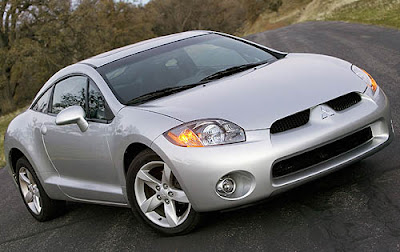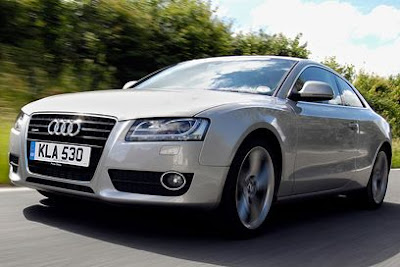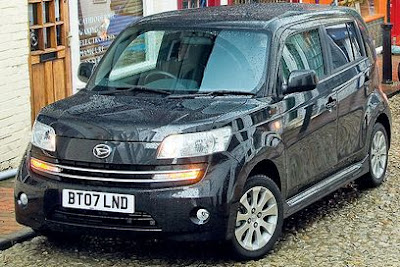
OVERVIEW
It may not have the high profile that its predecessor the Liana had (thanks to 'that' BBC car show), but the SX4 is the new Suzuki to slug it out in Australia's hard-fought small car segment.
Introduced in all-wheel drive hatch form already (more here), the SX4 family now incorporates front-wheel drive variants that start from (just) under $20,000. At that price, the SX4 is face-to-face with some well regarded Korean and Thai-built competitors, one or two discounted Japanese ones and even a South African/Euro.
Suzuki has enjoyed renewed esteem in Australia, mostly through the reception afforded the Swift. The company will doubtless expect some of the Swift's new-found cachet to transfer across to the SX4.
Steering clear of the current trend to go low and swoopy (as in the latest Corolla), the SX4 retains the Liana's styling philosophy of maximising headroom and interior space by sitting the occupants upright and placing a roof high over their heads. This lends the SX4 a slightly narrow-gutted look, but the 'Kabuki mask' front end and the general neatness of the styling take the curse off it.
Given the styling and the design, we expect the SX4 to appeal more to older buyers; particularly the sedan, which has a markedly different frontal styling treatment from the hatch, with its narrower grille slot and slightly more complex bumper styling. Suzuki has made the point that a substantial majority of small car buyers are married couples, between 40 and 60. The company also concedes that previous marketing programs for cars such as the Ignis, which were aimed at young females, left half the potential market untapped.
Hence the current advertising campaigns that concentrate on associating the Suzuki brand with rallying. According to Suzuki, males won't buy a car aimed at the female demographic, but women aren't shy about buying a car that's primarily aimed at men.
One quick point on rallying; Suzuki intends to join the World Rally Championship next year. This is a global strategy and the company hopes to attract some 'rally route cred' for the SX4 and the Swift. This is an experiment Subaru has tried already and while it works for the company in overseas markets, Subaru in Australia is moving away from it at a local level. Sadly, rallying in Australia appears to be losing momentum as a motorsport competition of relevance. If anything, tarmac rallies such as the Targa Tasmania seem to be gathering interest in lieu of traditional rallying.
We don't want to go into the whole marketing and product planning conundrum too much, but Suzuki has attempted to strike an appropriate balance with the SX4, taking into account the prospective buyers. They've added some cheap 'bling' where it was appropriate (keyless start and side curtain airbags for the SX4 'S'), but de-contented some expensive 'substance' to bring the SX4 in at the right price.
For many buyers, it won't matter that the sedan doesn't have rear drum brakes. For others, it will be a bargaining chip at retail level and, for a third group, it will be a major objection to buying the car in the first place.
Suzuki is, to some extent, hindered by the need to source the car from Japan, with higher cost manufacturing. Without the economies of scale presented by the 4000-unit run per month that Corolla enjoys, it's harder to convince Suzuki's head office of the need to field a car in Australia with the relevant balance of pricing and specification. From the factory's view point, if Suzuki can sell the Australian allocation of the SX4 without building a sweat, there's no cause for concern anyway and no need to reduce pricing or adjust specification.
Suzuki in Australia has extracted a promise from the factory in Japan that they will supply 5000 units for the coming year. That's a drop in the ocean, when Toyota sold that many Corollas during June alone.
PRICE AND EQUIPMENT
The SX4 is available in three grades (if you treat the all-wheel drive as a grade in itself). There's the base model, the SX4 'S' and the SX4 4WD, ranging in price from $19,990 to $26,390. Sedan and hatch are priced the same across the base and S grades, but the sedan isn't offered in 4WD form.
Base grade sedan and hatch are priced at $19,990 with the standard five-speed manual transmission. An extra $3000 ($22,990) will get you into the SX4 'S' and $1400 on top of that ($24,390) will buy the 4WD hatch. A four-speed automatic transmission option is available for all variants and costs an extra $2000.
Curiously, despite Suzuki pricing the sedan and hatch at the same level, the sedan misses out on some of the features the hatch boasts. This leads us to believe that the 'same price' tactic is somewhat misleading. For example, the sedan is fitted with 15-inch wheels in both grades and rear drums in lieu of the 16-inch wheels and rear discs fitted to the hatch. In other words, the buyer might have had 16-inch wheels and rear discs if prepared to pay the extra over the hatch.
Key features fitted as standard to the base grade variants include: tilt-adjustable steering wheel, electrically assisted steering, electric windows, electric mirrors, remote central locking, eight-speaker CD audio system with MP3 compatibility and remote controls (from the steering wheel), trip computer, air conditioning with pollen filter, dual front airbags, ABS, EBD and Brake Assist system.
As noted above, the base grade hatch is fitted with rear disc brakes, 16-inch steel wheels and full wheel covers, but the base grade sedan makes do with rear drum brakes and 15-inch wheels; also steel and completed with full wheel covers.
In addition to the base specification, the SX4 S comes equipped with leather-bound steering wheel, 'Keyless' start, cruise control, climate control air conditioning, front fog lights, seat-mounted side impact airbags for front occupants and curtain airbags.
As with the base grade, the S grade variants distinguish between the sedan and hatch where wheels and rear brakes are concerned. The SX4 S sedan is fitted with 15-inch alloy wheels and rear drums, but the SX4 S hatch is fitted with 16-inch alloys and rear discs.
Both levels of the front-wheel drivers are fitted with an eight-speaker audio system, but the four-wheel drive SX4 comes with six speakers only.
MECHANICAL
Much of the front-wheel drive SX4's specification is shared with the 4WD variants. The same J20A engine, which can trace its family tree back to the original Grand Vitara of 1998, is upgraded for the SX4 application with variable length inlet manifold runners. This change flattens the torque curve, providing more 'pull' across a broader range of engine speeds.
Displacing 2.0 litres, the engine features DOHC and four valves per cylinder. Maximum power of 107kW occurs at 5800rpm and the engine reaches its torque peak of 184Nm from 3500rpm. That's pretty much on the mark for a 2.0-litre engine in this segment.
Combined cycle fuel consumption as per ADR 81/01 is 8.4lt/100km for the manual or 9.5lt/100km for the auto.
Drive from the transversely mounted engine to the front wheels is by either a standard five-speed manual or optional four-speed automatic transmission.
Front suspension is MacPherson strut and the rear consists of a torsion beam. This combination still works effectively, but more and more cars in the small car segment are adopting a full IRS system.
The advantage of the torsion beam is that it contributes to consistent handling and is a compact design, leading to better interior space. This is particularly obvious in the SX4 sedan with a boot capacity of 515 litres. Suzuki boasts that this volume exceeds that of Falcon or Commodore sedans.
A rack and pinion steering system is boosted electrically and brakes are by ventilated discs at the front, with rear drums for the sedan or rear discs for the hatch.
Irrespective of grade or body style, ABS is fitted as standard, as are EBD and a brake assist system.
In many respects then, the SX4 is quite a conventional car -- dated even -- but Suzuki has a reputation for building bullet-proof mechanicals and that is the benefit of trusted and well proven components. This is a car that should withstand a fair bit of punishment without throwing in the towel.
PACKAGING
We've already covered some aspects of the way Suzuki has spread the SX4's features across the different variants. By inference, more conservative buyers will settle for the sedan with its smaller wheels and rear drums. For the same money, buyers can have the slightly better equipped hatch with larger wheels and four-wheel discs.
It's probably starting to sound like a broken record, but most of the SX4's competitors are fitted with rear discs.
Some have commented that Suzuki's persistence with the tall body/high roof design of the SX4 is a bit behind the times. You just have to look at everything from Chrysler 300C to the latest Corolla to see that low and slinky is the way of the future. Having said that, the SX4 manages to be relatively attractive and practical, but it certainly looks smaller than the Ford Focus, Toyota Corolla and other small car competitors.
Paradoxically, spaciousness is probably the SX4's forte, although in keeping with Japanese and Korean competitors, Suzuki doesn't actually publish interior dimensions in the car's specs. You'll have to take our word for it that it has plenty of head and legroom. The rear seat is more than adequate for accommodating adults, although the legroom can't match the headroom if the front seat occupants have their seats slid back to a point comfortable for them. As for the boot capacity in the sedan, be in no doubt -- it's huge.
In general, the SX4 doesn't depart from the script very often. There's a 'curry hook' on the rear of the front passenger seat. It's a neat little item that folds away discreetly and can support a weight of up to 3kg. Two cupholders forward of the gear shifter are capable of holding quite large bottles, but smaller bottles or cups will rock back and forward during cornering or braking, so the cupholders don't hold the contents all that snugly.
The keyless entry system in the SX4 'S' works very well. According to Suzuki, the system will prevent owners ever locking the key in the car by accident.
SAFETY
OK, it's a promise -- no mention of brakes, except in the context that all variants benefit from standard ABS, EBD and brake assist. These are the safety features that will keep SX4 drivers out of trouble anyway.
Once the SX4 driver has struck trouble (literally), there are at least two airbags to protect the driver and front passenger. If the vehicle is an 'S' grade variant, side impact airbags and a side curtain will help offset the impact and protect the thorax and head, respectively. The side curtain airbags also protect rear seat occupants from side impact-related head injuries.
All seating positions are equipped with three-point seatbelts and the front seats feature pre-tensioners. The outboard seats in the rear have a ratchet mechanism for fitting a child safety capsule and locking it in place.
COMPETITORS
By offering the SX4 across a wide range of prices and specifications, Suzuki has more or less ensured that the SX4 can and will be compared with most cars in the small car segment. Don't take this literally, but the front-wheel drive SX4 is no more than about one standard deviation either side of the small car mean. It's not class-leading, but nor is it a dud.
With the SX4, you're getting a car that will sell itself on the strengths of 'known quantity' build and reliability. That makes up for a lot of the bells and whistles that other competitors may have that are missing (in part), in the SX4.
Since Ford has lowered the price of the Focus below $20,000, we would certainly regard the Focus CL as a logical competitor to the SX4. Since Holden's Astra is priced fairly high, by comparison, we would see it as a competitor to the SX4 S. The Focus has a 2.0-litre engine and musters virtually the same power and torque, but higher in the rev range than the Suzuki; the Astra makes do with a 1.8-litre engine, but still comes within striking distance of the SX4 for output.
Holden's Viva and the Nissan Tiida ST are more logical competitors for the base grade SX4 and both are priced a full $2000 less than the Suzuki or the base Focus.
Hyundai Elantra SX and the about-to-be-superseded Mitsubishi Lancer ES are positioned at the same entry level price as the base SX4, but both of them are only available as sedans. Don't forget though, Hyundai's i30 model is due out in coming months. Will that be the same price? Gut feeling says no.
Kia Cerato comes in $500 less than the Suzuki and the Mazda3 Neo and Toyota Corolla Ascent are $1000 more expensive.
Ask Suzuki itself and it will tell you that the SX4's principal competitors are the Corolla and Mazda3, which is reasonable, since those are the two top-selling cars in the segment.
As for the 4WD? Subaru's new and improved Impreza R is it...
For further information, check our comparator here
ON THE ROAD
Most cars in the small car segment offer a four-speed automatic transmission as an option and the SX4 is no different. It's a smooth changing unit and for most people, it will be perfectly acceptable. From launch, it's a little aggressive and the car feels quite lively until the driver learns not to just mash the throttle from a standing start.
It does struggle, however, when the car is being pushed along at highway speeds -- and this is typical of a four-cylinder car with an automatic transmission.
The 2.0-litre engine is an undersquare design and although it develops healthy amounts of power and torque -- and even with that dual-stage inlet manifold -- it feels like it's running out of puff at higher engine speeds. This makes itself felt during overtaking manouevres and particularly on grades.
It's also a little raucous once the engine speed hits 5000rpm. That's about the point where the torque curve is falling away seriously, so many drivers will find themselves changing up to a higher gear at or before then. It's a case of a little more acceleration for a lot more noise.
As with most cars fitted with a four-speed auto these days, it would definitely benefit from an extra ratio, but Suzuki advises that a five-speed auto is still some way off and when it is introduced to the Australian market, it won't be in a small car at first.
Based on our short drive session, the SX4 is a tidy handler. The hatches with their 16-inch wheels seem to be less throttle-sensitive during cornering than the sedans with the 15-inch wheels. This may be a result of the sedans' extra length and rear overhang as much as the different wheel and tyre combinations. Also, the sedans driven were manuals -- with more engine braking -- so lifting off mid-corner had a more pronounced effect, tightening the cornering line more noticeably than in the auto hatches tested.
Overall though, objective observers would find the SX4 to be a safe and consistent handling machine, whatever the specification of car. At one or two intersections we overshot our drive route turns, but the SX4 pulled up in a commendably short distance.
The driving position is everything it should be. All the instruments and controls are readily accessible and easy to use.
Other than the engine noise at higher RPM, wind noise is noticeably present during open-road touring. It's not a whistle, more a constant rustle from around the larger external mirrors. Road noise manifests itself on some coarser surfaces as a low-frequency hum, but mostly noise is not a great issue in the SX4.
In the wash-up, consider the SX4 S in the context of how it compares with the Subaru Impreza -- not the newest one released last week, but the outgoing model. The S is probably not as refined ultimately, although it offers a more enjoyable driving experience overall and is a better value package for the money.
It's at the other end of the pricing spectrum where we think the SX4 will find life a bit rocky. For $19,990, it's up against Ford's Focus...








